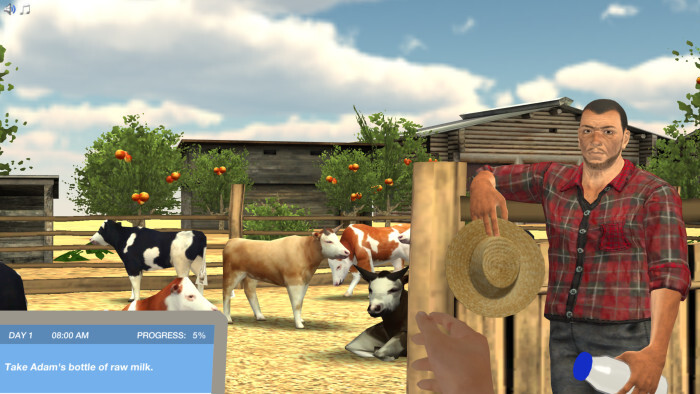
Homogenization, or thorough mixing, of mutually insoluble liquids is a process that we rely on daily, whether knowingly or unknowingly. Emulsions and dispersions that we commonly consume in our lives – like cosmetics, beverages, pharmaceuticals – all undergo homogenization. Many dairy products, like milk, cheese, yogurt and ice cream, require homogenization for stability and uniformity of appearance and taste.
While homogenization may sound easy enough, let’s not forget that the underlying physicochemical processes are complex. A knowledge of these processes can make its applications better and more efficient. Here, we list five engaging methods to teach homogenization that will make this a delightful topic for students.
Topics like homogenization demand that students learn both the mechanical and biochemical sides of the process. Interactive models allow students to visualize and understand what happens behind the scenes to make a machine or mechanism work.
For example, in Labster’s homogenization simulation, students use a portable homogenizer (virtually, of course) to homogenize milk. In the process, they go through several immersive 3D animations that detail the mechanical principles that make a homogenizer work. Particularly, the students get to interactively appreciate the pistons and valves that make up a homogenizer.

Games and activities can truly help bring out the complex inner workings of a scientific concept or an engineering mechanism. They leverage the creativity of the human mind to enhance the learning environment and add to our knowledge.
You can plan a bunch of creative games and activities around homogenization. For example, ask your students to build a hand-held mechanical device to homogenize a mixture of oil and water. Or you can organize a tour of an ice cream production plant so the students can meet with homogenization experts. This way, the students will be able to appreciate what homogenization can do, while enjoying a bit of ice cream!
Being able to see how the structure of milk changes upon homogenization can make this an exciting topic for students. Advanced technologies, like animation, simulation and virtual reality, can make this possible for educators. In addition, these technologies readily ease the educator’s job by neatly presenting complex topics of study.
Take Labster’s homogenization simulation, for example. In our simulation, the students observe the molecular structure of milk under a microscope in a virtual lab environment. They determine what differentiates processed commercial milk from raw milk. Specifically, the students get to learn about the differences in the sizes of milk particles at different homogenization stages. The students also acquaint themselves with the industrial role of emulsifiers, as well as the mechanical components of a homogenizer. This learning process occurs with the help of detailed animations and advanced simulations.

Discover Labster's homogenization virtual lab today!
The fact that a subject can create career opportunities lets students know that they can actually enjoy applying the topic professionally and earn money while doing so. When teaching homogenization to your students, you can discuss the many career opportunities it brings with it.
For example, talk to your students about the indispensable part that homogenization plays in the dairy industry. Tell them how engineers working at a pharmaceutical plant regularly use homogenization.
Any subject can become interesting if the students know its real-world applications. Homogenization has so many real-world applications that educators can develop an entire lecture around them. Discussing these applications will get the students excited to learn how to perform homogenization.
For example, tell your students how homogenization ensures that our milk tastes good and stays nutritious for a long time. Tell them how homogenization is important for ice cream to stay stable for a long time. Talk to them about the role of homogenization in keeping our shampoos and lotions consistent in their appearance and texture.
Highly practical topics like homogenization require the students to experience the experimental side. At the same time, students must also learn about the mechanisms that operate in the background. The methods that we have discussed here will help you make homogenization an engaging and fun topic.
Try our free 30-day All Access Educator's Pass today and teach with the Homogenization simulation alongside 300+ other virtual labs!

Labster helps universities and high schools enhance student success in STEM.
Request DemoRequest a demo to discover how Labster helps high schools and universities enhance student success.
Request Demo